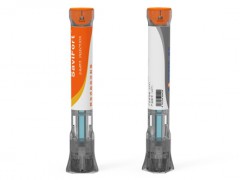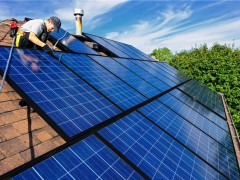? 盡管世界上最大的幾家石油公司最近做出了凈零鉆井的承諾,但它們仍在加大鉆井作業(yè)力度
? 伍德麥肯茲負責勘探作業(yè)的副總裁:石油巨頭仍在進行原油勘探作業(yè),當年對勘探的談論比以前少得多
? 不管國際能源署(IEA)是否制定了凈零鉆井的路線圖,今年全球都可能出現(xiàn)新鉆井數(shù)量的上升
據(jù)美國油價網(wǎng)報道,IEA去年發(fā)布的在2050年前實現(xiàn)凈零排放路線圖,已成為時機不佳的教科書范例。 僅僅4個月以后,IEA表示,由于歐佩克的備用產(chǎn)能不斷減少,全球在石油勘探方面需要更多的投資。
除了這些混雜的信號,IEA去年還抨擊了歐佩克+,指責后者人為保持全球石油供應緊張,以維持高油價。根據(jù)英國《金融時報》的湯姆?威爾遜所說,乍看之下,人們可能認為,世界上最具影響力的能源機構并不真正知道自己在說什么。 然而,石油巨頭并不關心這一點。 石油巨頭正在悄悄地進行原油勘探作業(yè), 他們只是不去談論勘探一事。
伍德麥肯茲負責勘探作業(yè)的副總裁安德魯?萊瑟姆日前向英國《金融時報》的威爾遜表示:“石油巨頭仍在悄悄勘探原油,然而他們對原油勘探作業(yè)的表態(tài)遠不如過去。你必須是一個真正專業(yè)的行業(yè)觀察者,才能了解這些事情,(因為)石油巨頭不會談論這些事情。”
伍德麥肯茲稱,去年全球共鉆了798口評價井和勘探井,與一年前的鉆井量大致相同。 這也大大低于2019年的1256口井的鉆井量。但根據(jù)萊瑟姆的說法,這種下降與疫情有關。
這意味著,不管IEA是否制定了實現(xiàn)凈零排放的路線圖,今年的新鉆井數(shù)量都可能增加,尤其是考慮到石油需求的強勁態(tài)勢,IEA也承認,石油需求已經(jīng)超出了市場觀察人士的預期。
據(jù)報道,殼牌公司1月早些時候在納米比亞發(fā)現(xiàn)了一個潛在的大型油藏。 并不是殼牌公司宣布了這一發(fā)現(xiàn)。 路透社援引不愿透露姓名的知情人士的話稱,這個南非國家將于近期發(fā)表正式聲明。
埃克森美孚公司繼續(xù)在圭亞那近海獲得石油發(fā)現(xiàn)。 1月早些時候公布的最新消息是,埃克森美孚公司計劃開始從位于斯塔布魯克區(qū)塊的第二個平臺生產(chǎn)石油,這將使圭亞那的石油產(chǎn)量增加3倍。 與此同時,這家美國超級石油公司還宣布了到2050年前成為一家凈零排放公司的計劃。
法國道達爾能源公司在新油井鉆探方面尤其活躍,同時也在加速可再生能源業(yè)務的擴張。 英國《金融時報》援引的伍德麥肯茲數(shù)據(jù)顯示,這家法國能源巨頭去年鉆取的新探井數(shù)量最多,排在第二名的埃克森美孚公司和第三名的挪威能源巨頭Equinor之前。
對埃克森美孚公司來說,這基本上是正常的業(yè)務。 與殼牌公司不同的是,埃克森美孚公司有一些激進的股東在跟蹤它,但沒有法院裁決強迫它削減其石油產(chǎn)量。 也許正是這個事實使得殼牌公司案例特別有趣。 去年,這家超級巨頭被荷蘭一家法院下令在10年內削減45%的碳排放量。殼牌公司表示,其石油產(chǎn)量在2019年就已經(jīng)達到頂峰。
然而,殼牌公司正在悄悄地進行鉆探作業(yè),它不僅僅是在進行鉆探作業(yè),而且是在一個沒有發(fā)達基礎設施或任何形式石油工業(yè)的邊境地區(qū)進行鉆探作業(yè)。 這意味著如果發(fā)現(xiàn)得到證實,屆時將會有更多的投資。 那么,殼牌公司為什么要這么做?
儲量替代是一個原因。 即使有計劃——也有義務——在未來減少石油產(chǎn)量,殼牌公司也沒有完全放棄其核心業(yè)務。 不管各種預測如何,石油需求看起來仍有幾十年的增長空間。 新的風能和太陽能裝置的成本正在上升,關鍵的礦產(chǎn)品和金屬的供應是有限的,新的礦山的交付時間甚至比海上油井的交付時間還要長。 這對可再生能源革命來說不是好兆頭,但對石油和天然氣需求來說卻是個好兆頭。
另一個原因是油價。 隨著油價的提高,新的未充分開發(fā)地區(qū)的鉆井成本將變得更加低廉。 在布倫特原油價格為每桶91美元的情況下,勘探活動可能比布倫特原油價格為每桶40美元時更具吸引力,尤其是因為高油價強烈表明需求正超過供應。
由金融專家組成的氣候風險定價組織“碳追蹤者(CarbonTracker)”本月早些時候發(fā)布的一份報告警告說,新的油氣勘探可能會導致價值5000億美元的資產(chǎn)陷入困境,因為從長遠來看,石油需求將會消失。 然而,碳追蹤者去年曾預測,風能和太陽能發(fā)電的成本將繼續(xù)下滑,而這一預測在報告發(fā)布一年后并沒有真正實現(xiàn),因此,這些資產(chǎn)是否真的會陷入困境仍是一個懸而未決的問題。
石油巨頭——和中小型石油公司——正在做任何在當前環(huán)境下都會做的事情。 上述環(huán)境表明,對石油巨頭產(chǎn)品的需求是強勁的。 當然,石油巨頭會通過生產(chǎn)盡可能多的產(chǎn)品來滿足這種容易強勁的需求。 但他們不會像以前那樣公開談論這個問題。 相反,他們會重點投資風能、太陽能和電動汽車,同時悄悄地鉆探原油以確保明天和后天市場有足夠的原油供應。
李峻 編譯自 美國油價網(wǎng)
原文如下:
Big Oil Is Quietly Exploring For More Crude
· The world’s largest oil companies are ramping up drilling operations despite recent net-zero pledges
· WoodMac VP for exploration: The majors are still exploring and say much less about it than they used to
· With or without the IEA’s roadmap to net zero, this year could see an uptick in new drilling
The International Energy Agency’s Net Zero by 2050 roadmap, issued last year, has become something of a textbook example of bad timing. Just four months later, the agency said the world needs more investment in oil exploration because of dwindling OPEC spare production capacity.
Besides these mixed signals, the agency also lashed out at OPEC+ last year, accusing it of keeping the global oil supply artificially tight to keep prices high. At first glance, one might think the world’s most influential energy body, per the FT’s Tom Wilson, does not really know what it’s talking about. Yet Big Oil does not care about that. Big Oil is drilling. It’s just not talking about it.
“The majors are still exploring and say much less about it than they used to,” Andrew Latham, vice-president for exploration at Wood Mackenzie, told the FT’s Wilson this month. “You have to be a real specialist sector watcher to know these kinds of things [because] they don’t talk about it.”
According to the consultancy, a total of 798 appraisal and exploration wells were drilled last year, which was about the same as was drilled a year earlier. It was also substantially less than what was drilled in 2019, at 1,256 wells, but the drop was, according to Latham, connected to the pandemic.
This means that, with or without the IEA’s roadmap to net zero, this year could see an uptick in new drilling, especially given the strength of oil demand, as admitted by that very same IEA to have exceeded market observers’ expectations.
Shell struck a potentially major deposit in Namibia earlier his month, according to reports. It wasn’t the company that announced the find. It was Reuters, citing unnamed sources in the know who said the government of the southern African country would make an official announcement this week.
Exxon continues to make find after find offshore Guyana. The latest update came earlier this month and was about plans to start pumping from a second platform in the Stabroek Block, which would boost the country’s oil output three times. Meanwhile, the supermajor has also announced plans to become a net-zero company by 2050.
French TotalEnergies, formerly just Total, has been particularly active in new oil well drilling, even as it also ramps up renewable energy expansion. The French company drilled the most new exploration wells last year, according to Wood Mac data cited by the Financial Times, coming ahead of both Exxon, which was second, and Norway’s Equinor, which came in third.
For Exxon, it is mostly business as usual. The company has some activist shareholders on its tail but no court rulings obliging it to shrink its oil output, unlike Shell. It is perhaps this fact that makes the Shell case especially interesting. The supermajor was ordered by a Dutch court to slash its emissions footprint by 45 percent within ten years last year, and it said that its production had peaked anyway back in 2019.
Yet Shell is drilling—and not just drilling but doing it in a frontier region with no well-developed infrastructure or oil industry of any sort. This means higher investments should the find be /confirm/ied. Why is Shell doing this?
Reserve replacement is one reason. Even with plans—and an obligation—to produce less oil in the future, the company is not completely giving up its core business. Oil demand, regardless of various forecasts, looks like it still has a few good decades in it. The costs of new wind and solar installations are rising, the supply of critical minerals and metals is limited, and new mine lead times are even longer than the lead times for offshore oil wells. This doesn’t bode well for the renewable revolution, but it does bode well for oil and gas demand.
Another reason is oil prices. With these higher, drilling in new underexplored regions becomes more affordable. With Brent crude at $91 per barrel, exploration is a lot more attractive than it probably was with Brent at $40, not least because high oil prices strongly suggest demand is exceeding supply.
Carbon Tracker earlier this month published a report warning that new oil and gas exploration could result in stranded assets worth $500 billion because over the long term, oil demand would perish. Yet the same organization last year forecast a continued slump in the costs of wind and solar power, and that did not exactly play out, just a year after the report, so whether or not these assets will indeed be stranded remains a wide open question.
Big Oil—and small and medium oil, too—is doing what any business would do in the current environment. Said environment suggests that the demand for Big Oil’s products is strong. Naturally, they would try to respond to that strong demand by producing as much as they can to satisfy it. But they won’t talk about it as openly as they used to before. Instead, they would highlight their investments in wind, solar, and EVs while quietly drilling to ensure there will be enough oil for tomorrow and the day after.
免責聲明:本網(wǎng)轉載自其它媒體的文章,目的在于弘揚石化精神,傳遞更多石化信息,并不代表本網(wǎng)贊同其觀點和對其真實性負責,在此我們謹向原作者和原媒體致以敬意。如果您認為本站文章侵犯了您的版權,請與我們聯(lián)系,我們將第一時間刪除。







